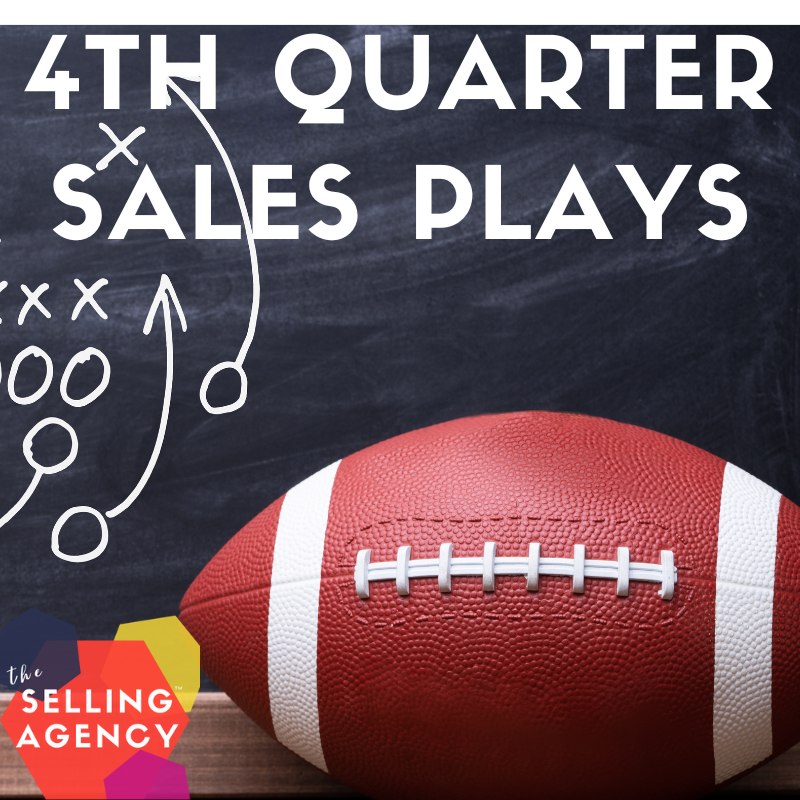Here’s another peek into what it’s like to work with me and The Selling Agency. There are no magic tricks. No silver bullets. No one size fits all sales training. No quick fixes to improving sales results. Every business is different but many of the problems with Sales Team’s performance can be boiled down to very predictable issues.
For instance, I spend a lot of time combing through pipelines with sellers.
This is usually in response to slow quarter results or weak projections or heaven help you if you’re a salesperson and you tell me, “I just don’t have enough leads.”
Note to sellers: I’m going to take a look at your pipeline and figure out quickly what’s going on.
More often than not, there are either plenty of opportunities that are wilting or opportunities that have been poorly qualified.
If you want to unstick deals or really evaluate the potential of deals in your funnel –
I’ve found these 3 questions KEY to unlocking the true potential of opportunities in your Pipeline:
Question 1: Do you clearly understand your prospect’s timeline for making decisions?
If you called on a prospect and especially if they have a current supplier, is there any impetus for change? Have you uncovered what, if any, urgency there is around making a decision?
Another thing you need to understand is what other factors play into implementation and timelines. Do they need talent or training around purchasing your solution? Are there other products or solutions that need to be purchased prior to or at the same time? And if so, where are they in that process (and can you help or offer insights)?
Closing sales is 99.99999999% on your customer’s timeline. What can you do to understand theirs better or impact it?
Question 2: Do you understand the criteria they’re using to make decisions?
You may think you’ve fully explained your features in terms of your customers’ benefits, but that’s not nearly enough to know if they want to buy. This is a tough question to answer and I think most salespeople don’t dive deep enough into understanding the way your customers and their organizations make buying decisions. The personal, professional, and bureaucratic factors of decision making by buying committees vary in every single company you will encounter. Don’t skip these questions and assume every buyer or every customer is the same.
Ask more probing questions about what instances/conditions caused your prospect to change vendors last time. Or, what process did they go through to determine their needs or next steps? What goals do they have for meeting with you?
You can go a more direct route with buyers and ask what is your company’s investment or purchase philosophy (3 bids, lowest wins, best overall value, best budget fit, long-term investment)?
Or from a process and implementation perspective, what is the order of things that need to happen before a decision is made? And what needs to happen internally before implementation of a solution?
Your customers aren’t going to draw you a flow chart of all the factors that go into making a decision to buy your product or replace a current vendor. It’s up to YOU to uncover all the filters and criteria that all competing solutions will be funnelled through or you’re definitely not going to know why you’re “stuck” and how or where to try to influence decision-makers.
Question 3: Do you know who is “driving the bus, giving directions, or is a backseat driver”?
I use this analogy because there are usually more moving parts to a business decision than one primary decision maker. If you are “single-threaded” you are in dangerous territory of being outsold and outsmarted by a competitor who is checking the currency of everyone involved in the buying process.
There are more people involved in making a decision now than in just the past 5 years. With a range of 3 to 6 people or more in complex purchases, there are “formal” buyers and “informal” influencers that have experience, expertise, and opinions that play into the final decision.
Who’s driving the bus (such as directors or VPs – leading the purchase initiative), and who’s got the map (CEOs or VPs – directing big picture initiatives), and who’s in the backseat giving you alternate routes, driving advice, or cautioning the driver (influencers all impacted by the purchase, such as users, administrators, managers, operations, IT, or production).
Your buyer might bristle at being asked head-on, “Who else is part of this decision making process?” because they don’t want to lose control of the process, seem like they’re incapable of making the decision, or they might be keen on playing their cards close to their vest – thinking that gives them leverage. Here are some alternate ways to develop the organizational understanding of who is involved in the decision:
Ask, who owns the headache when . . . this breaks, this happens? Or who else in the organization does this problem/decision/budget impact? And what are key outcomes that are important to anyone else looking at the decision? Or who would have a say in the timeline, training, or implementation of this solution?
Get super curious about who else is involved in making decisions and you can unstick those deals and have a higher chance to convert opportunities into loyal customers.
Take a handful of deals in your pipeline – in a few different stages – qualified, consideration, proposed, and work through these questions with each one.
Do you have the answers? I’m betting that you don’t or else they wouldn’t be withering opportunities. Dig in to do the work and circle back with your customers to answer these three key questions. You can advance opportunities that are stuck, clean out or disqualify opportunities that are not going to move, and make progress with your existing pipeline.
Until next time, stop hoping and start SELLING!
-sks
PS – Drop us a comment and let us know if these helped “unstick” an opportunity for you and how you handled it!










